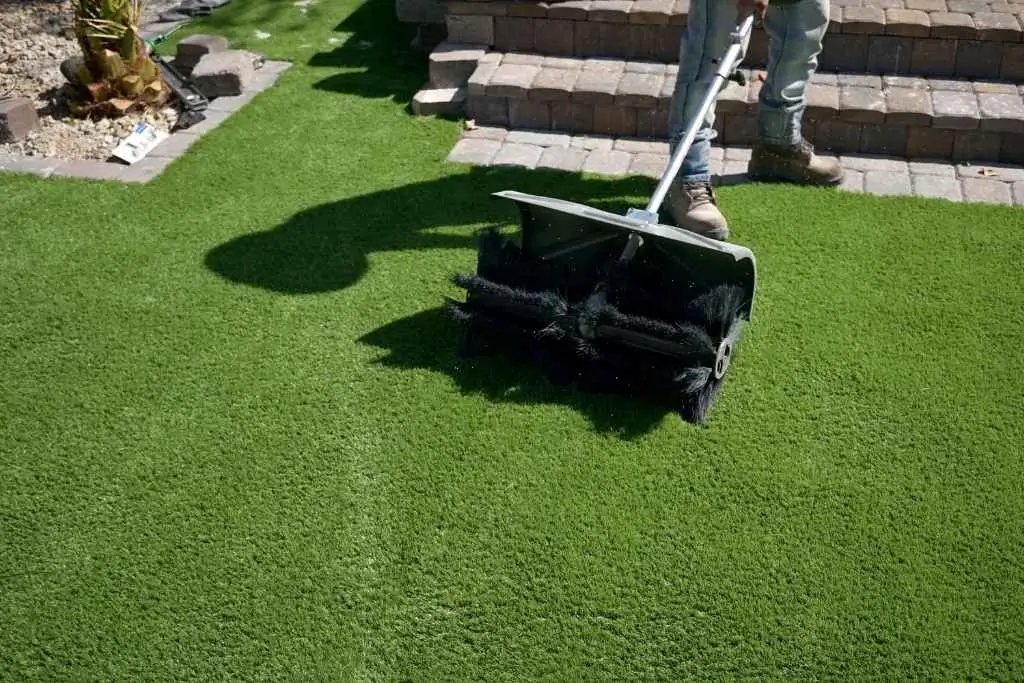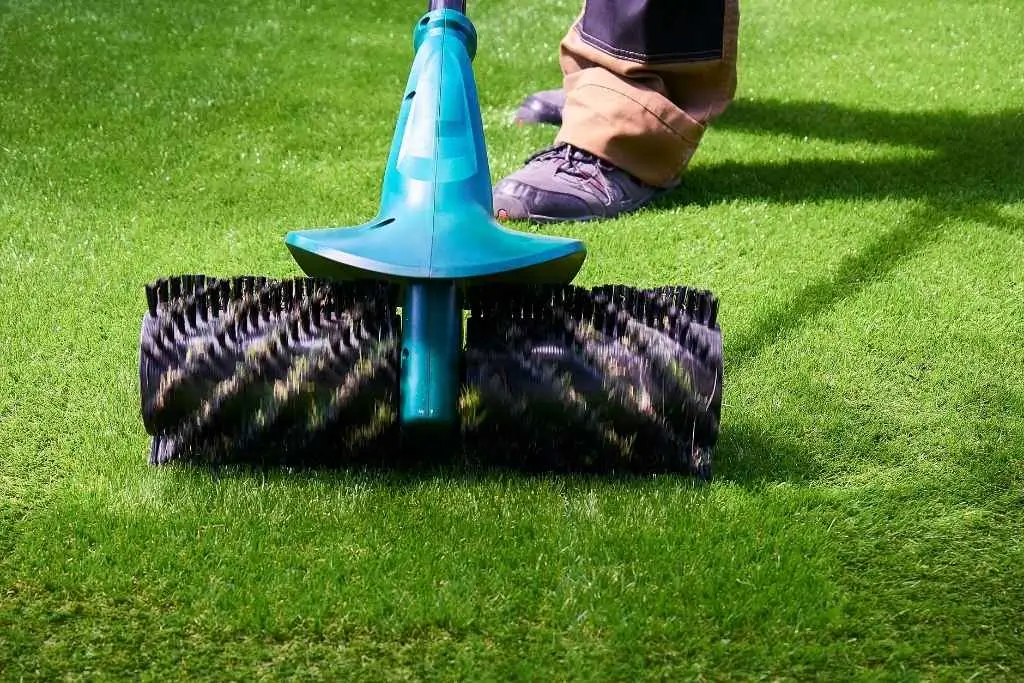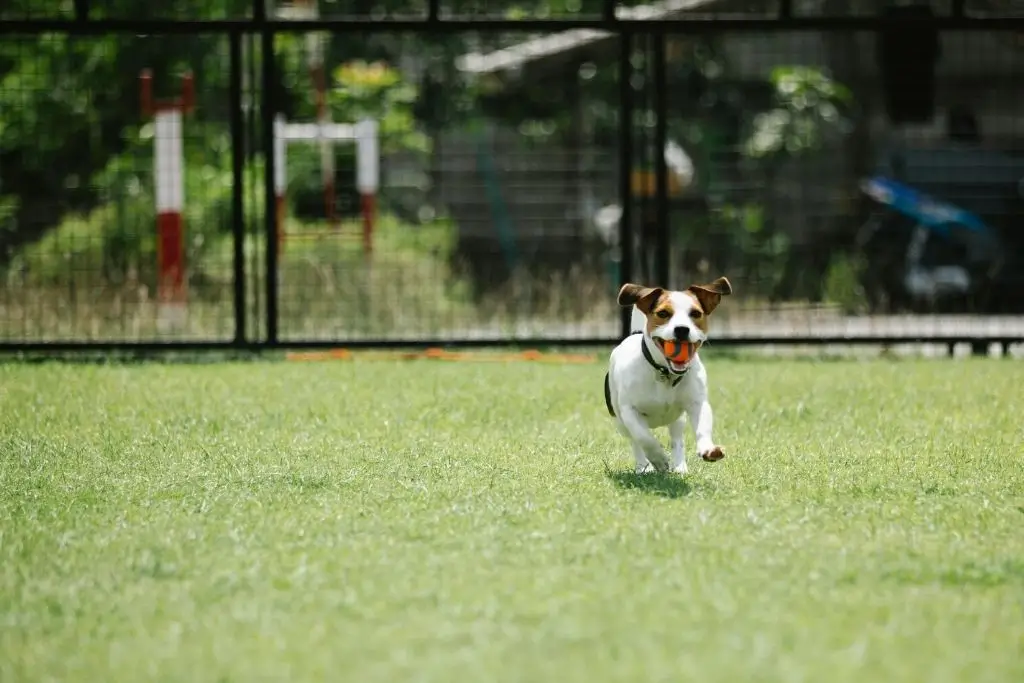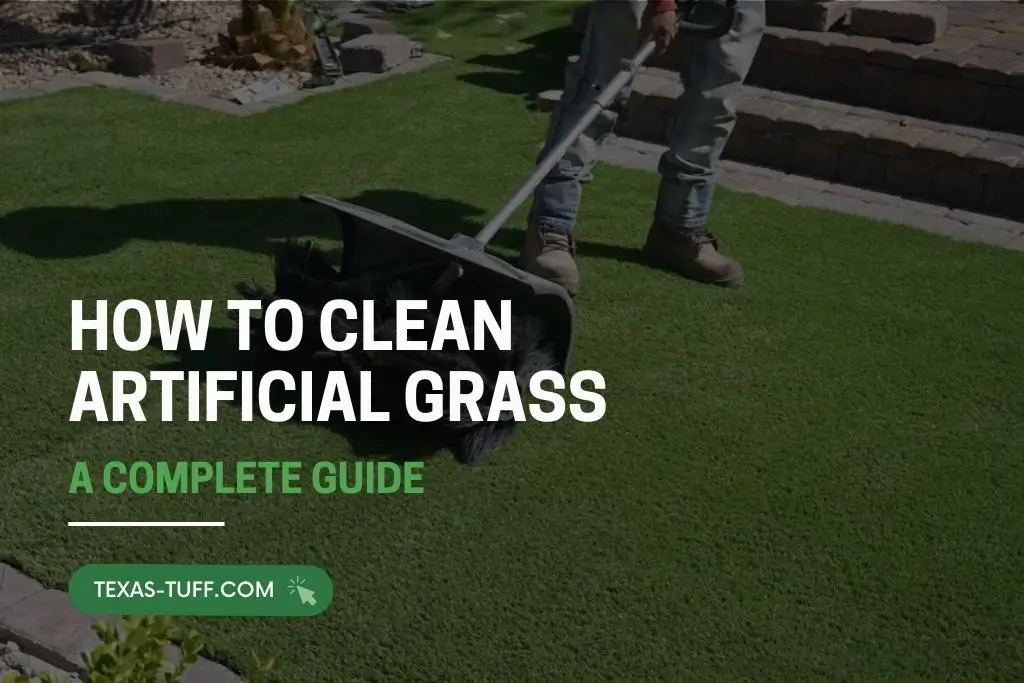Artificial grass is more than just a low-maintenance lawn, it’s an investment in a beautiful, evergreen outdoor space.
It saves water, making it an eco-friendly choice compared to natural grass. It reduces yard work, pesticides, and stays vibrant year-round.
Even the toughest turf needs care. Dirt, dust, debris, pet messes, and spills can dull its appearance and damage the fibers if ignored.
Proper cleaning keeps your turf looking great, and Texas Tuff is here to guide you every step of the way.
Cleaning artificial grass is simple when you know the right approach. Using basic tools and routines can keep your lawn lush, safe, and inviting.
This guide will cover:
- Why Cleaning Matters – Protect your investment, keep fibers fresh, and prevent odors or stains.
- Bi-Weekly / Monthly Maintenance tips – Remove leaves, dirt, and dust.
- Deeper Cleaning Techniques – Rinse, scrub, and disinfect when necessary.
- Pet-Friendly Cleaning – Handle pet urine, feces, and lingering smells effectively.
- Stubborn Stains and Residues – Remove gum, sap, or sticky messes safely.
- Cleaning Methods to Avoid – Learn which mistakes can harm your turf or infill.
With these steps, your artificial grass can stay lush, safe, and vibrant. Minimal effort is all it takes to keep your yard picture-perfect.
Why Regular Cleaning is Essential for Artificial Turf
Artificial grass looks great and is low maintenance, but it isn’t maintenance-free. Regular cleaning is essential to keep it looking fresh and performing well.
Why Cleaning Matters:
- Remove dirt and debris: Leaves, dust, twigs, and other debris can settle on your turf. Over time, these can cause matting and make your grass look worn.
- Prevent odor and bacteria buildup: Pet waste, food spills, and stagnant water can create unpleasant smells and foster bacteria growth. Cleaning prevents these issues before they start.
- Protect the Fibers: Dirt and grime can work into the fibers, causing them to flatten or fray. Regular care helps the blades stay upright and natural-looking.
- Maintain Proper Drainage: Debris can clog drainage holes, leading to pooling water that may damage the backing or infill.
- Extend the lifespan: Routine cleaning preserves the integrity of your turf, reducing the risk of premature wear and tear.
Even though artificial grass is durable, neglecting it can reduce its lifetime.
Keeping it Clean Ensures:
- A lush, green appearance year-round.
- A safe, hygienic environment for kids and pets.
- A smooth surface for sports, play, or entertaining.
Cleaning doesn’t have to be difficult. With the right tools and a few simple steps, maintaining your artificial grass is easy. Texas Tuff is here to guide you through the process and keep your yard looking its best.

What Can Impact the Quality of Your Artificial Turf?
Even though artificial grass is built to last, a few factors can affect its appearance and performance. Watching for these issues helps you keep your lawn looking its best.
Here’s What Can Impact Your Turf:
- Drainage Issues
Poor drainage can lead to water puddling. Puddles make the grass soggy and can erode the base. Proper drainage keeps your turf dry and comfortable. - Sun and Heat
Direct sunlight can make turf hot and may cause fading over time. Using lighter-colored infill can help protect and cool the turf. - Heavy Use
Foot traffic and active play can flatten the fibers. Regular brushing and moving furniture or equipment around prevents uneven wear. - Installation Problems
Uneven ground, weak seams, or a poor base can create bumps or wrinkles. Proper installation from the start avoids these issues and ensures your turf performs well. - Worn Infill
Infill cushions the turf and provides support. Over time, it can compact or break down. Adding more infill helps maintain a soft, even surface. - Pets and Odors
Pet waste can stain and smell if not cleaned promptly. Rinsing and using pet-safe cleaners keeps the area fresh and inviting.
Keeping an eye on these factors lets you enjoy a beautiful, functional lawn that lasts for years.
How to Clean Artificial Turf and Maintain Its Longevity
Keeping your artificial grass clean doesn’t have to be difficult. With the right routine, you can preserve its look, feel, and lifespan. Cleaning is best approached in two ways: light, regular maintenance and deeper cleaning.
Weekly or Monthly Light Clean
A light cleaning removes everyday debris and keeps your turf looking fresh. Here’s what to do:
- Remove Loose Debris
Use a leaf blower, garden rake, or soft-bristle broom to clear leaves, twigs, and dirt. Avoid metal rakes, they can damage the fibers. - Rinse the Turf
Spray the grass with a garden hose to wash away dust, pollen, and small particles. This keeps it vibrant and prevents buildup. - Brush the Fibers
Lightly brush against the grain to keep fibers upright. This also helps distribute infill evenly and prevents matting. - Check for Stains or Spots
Wipe away spills or pet accidents promptly. Mild soap or a turf-safe cleaner works well for minor stains.
Deeper Cleaning
A deeper clean is needed every few months or seasonally when your turf starts looking dull. Key steps include:
- Scrub Stubborn Stains
Use a soft brush with water and mild detergent. Avoid harsh chemicals that can damage fibers or infill. - Rinse Thoroughly
Make sure all soap residue is removed after scrubbing. - Deodorize Pet Areas
Apply an bio-enzymatic cleaner to neutralize odors. - Fluff the Fibers
Use a stiff broom to lift compressed areas, keeping the grass soft and natural-looking. - Refresh the Infill
Check the infill level and add more if needed. This keeps the turf cushioned, resilient, and prevents matting.

Best Way to Clean Pet Waste from Artificial Grass
Keeping artificial grass clean is essential for pet owners. Pet waste, including urine, feces, and odors, can affect both the hygiene and appearance of your turf.
Here is how to manage pet waste effectively and keep your artificial lawn looking great.
1. Cleaning Pet Urine
- Rinse Immediately – Hose down the area right after your pet urinates to dilute the urine and prevent odor buildup.
- Use Enzymatic Cleaners – Pet-safe enzymatic cleaners break down urine and neutralize odors at the source, keeping your turf fresh.
- Regular Deep Cleaning – Every few weeks, perform a deeper rinse and scrub, especially in high-traffic pet areas, for thorough cleanliness.
- Absorb Moisture and Odors – Sprinkle zeolite on the area, then lightly brush to distribute it evenly. This helps absorb moisture and neutralize odors.
2. Cleaning Pet Feces
- Pick Up Solid Waste – Immediately remove feces with a scooper or bag to prevent staining and bacterial buildup.
- Rinse the Area – Spray the spot with water to remove any residue.
- Apply Cleaner if Needed – Use mild soap or a pet turf cleaner for lingering stains or odors. Avoid harsh chemicals that could damage the fibers.
- Brush the Fibers – After cleaning, gently brush the turf fibers against the grain to restore their natural look and ensure even distribution of the infill.
3. Maintain a Routine
Regular cleanup prevents long-term odors and keeps your artificial grass hygienic and visually appealing for both pets and people.
With consistent care, your turf will remain:
- Safe for pets
- Clean and fresh
- Comfortable for play and relaxation
A little maintenance goes a long way toward keeping your backyard enjoyable and odor-free.

Why You Should Consider Commercial Turf Cleaners
A commercial turf cleaner makes maintaining artificial grass simple, efficient, and highly effective, especially in high-traffic areas or pet zones.
Here’s Why They are Worth It:
- Deep Cleaning Power – Penetrates turf fibers and infill to remove dirt, grime, and odors that water alone cannot tackle.
- Pet-Friendly Formulas – Neutralizes pet urine and feces odors safely, keeping your yard fresh and hygienic.
- Time-Saving – Covers larger areas quickly and reduces the need for manual scrubbing.
- Extend Turf Life – Helps maintain fiber softness and infill integrity, protecting your investment.
- Easy Application – Most cleaners work with a hose, sprayer, or pump system and are simple to use.
Regular use of a commercial turf cleaner keeps your artificial grass fresh, safe, and well-maintained while saving time and effort.
How to Remove Sticky Residue from Synthetic Grass
Even with regular maintenance, sticky substances like:
- Tree sap
- Chewing gum
- Spilled drinks
Texas Tuff recommends using freeze spray for these stubborn spots. The cold hardens the sticky residue, making it easy to lift off without damaging your turf. It’s a fast, safe, and effective way to keep your artificial grass clean and looking fresh.
Step-by-Step Guide
- Identify the Spot: Check the affected area carefully to see how large or sticky the residue is.
- Apply Freeze Spray: Spray the residue with a turf-safe freeze spray. Let it sit for a few minutes; the cold will harden the sticky substance, making it easier to remove.
- Scrape or Peel Gently: Use a soft brush or plastic scraper to lift the hardened residue. Avoid metal tools that could damage the turf fibers.
- Use a Gentle Cleaner (Optional): For any leftover residue, mix warm water with mild soap or a turf-safe cleaner and lightly scrub the area.
- Rinse Thoroughly: Hose down the spot to remove any loosened residue and soap.
- Check for Remaining Spots: Repeat the process if necessary on stubborn areas.
Tip: Regularly check your turf after storms, playtime, or outdoor activities to catch sticky spots early. Freeze spray makes cleanup quick and keeps your artificial grass looking fresh.
Keep Your Artificial Turf Looking Its Best with Texas Tuff
Artificial grass is a durable, low-maintenance investment, but it still needs professional care on occasion to stay vibrant, safe, and enjoyable. That’s where Texas Tuff comes in.
Our expert maintenance services in the DFW area are designed to keep your turf looking its best year-round. We specialize in:
- Turf Restoration & Brushing – Keep fibers upright and the lawn soft and lush.
- Repairs – Fix seams, edges, and damaged areas for a flawless appearance.
- Drainage Checks – Ensure proper water flow to prevent pooling and damage.
- Infill Replacement – Maintain even coverage for comfort and durability.
With Texas Tuff, your artificial turf will stay healthy, vibrant, and safe for kids, pets, and family gatherings.
Let our team handle the hard work so your lawn stays beautiful and worry-free. Contact Texas Tuff today to schedule your artificial turf maintenance service in the DFW area!
FAQs About Artificial Grass Cleaning & Maintenance
Both tools are effective for maintaining artificial turf. A leaf blower efficiently clears leaves, dust, and light debris, while a rake is better suited for heavier material. Regular use of either method helps prevent soil compaction and ensures the turf fibers remain upright and well-maintained.
For general maintenance, rinsing artificial turf once a month is typically sufficient to remove dust and light debris. In areas with high foot traffic or where pets frequently use the lawn, rinsing more frequently, such as once a week, helps maintain cleanliness and hygiene, ensuring the turf remains fresh and well kept.
Leaf blowers, soft brooms, garden hoses, and gentle scrub brushes are the most effective. Avoid heavy vacuums that could remove infill or damage fibers.
No. Artificial grass does not grow, so adding soil or seeds won’t restore worn areas. Instead, replenish infill, brush fibers, and use professional turf repair if necessary.







